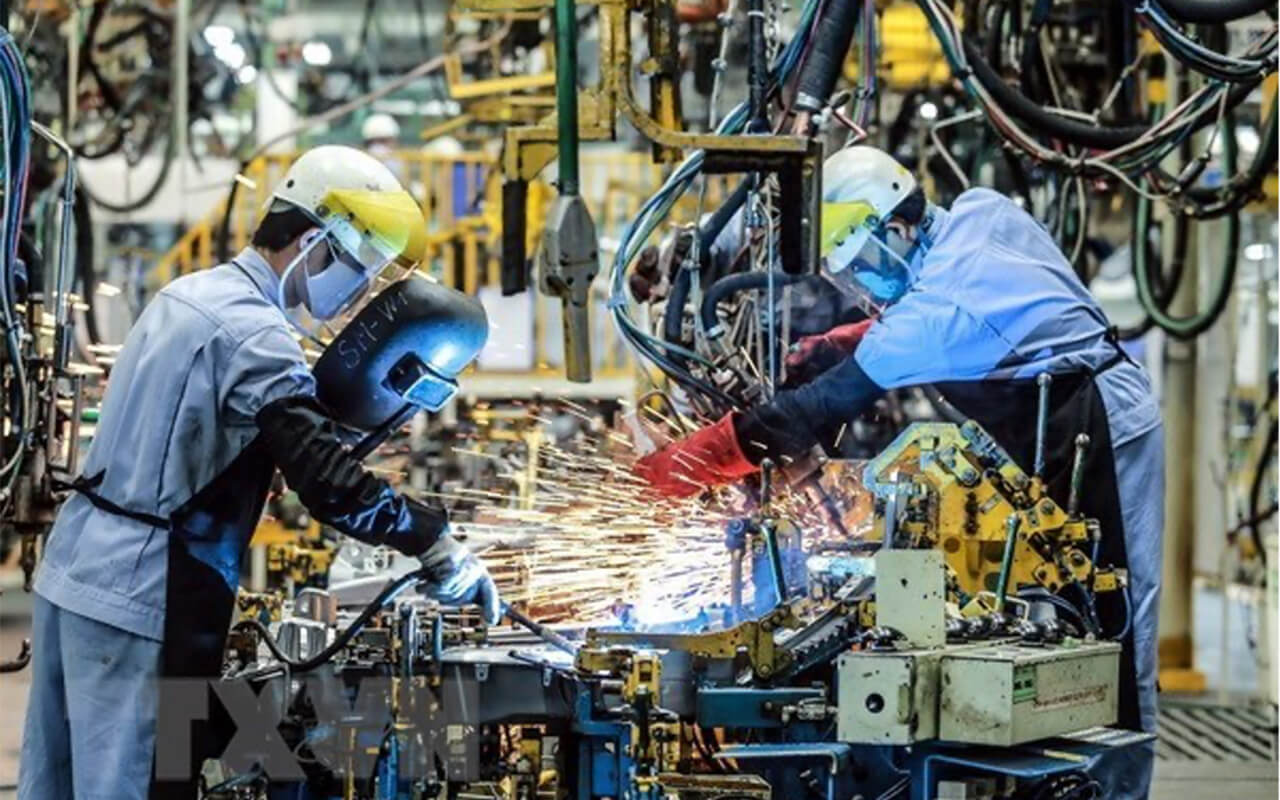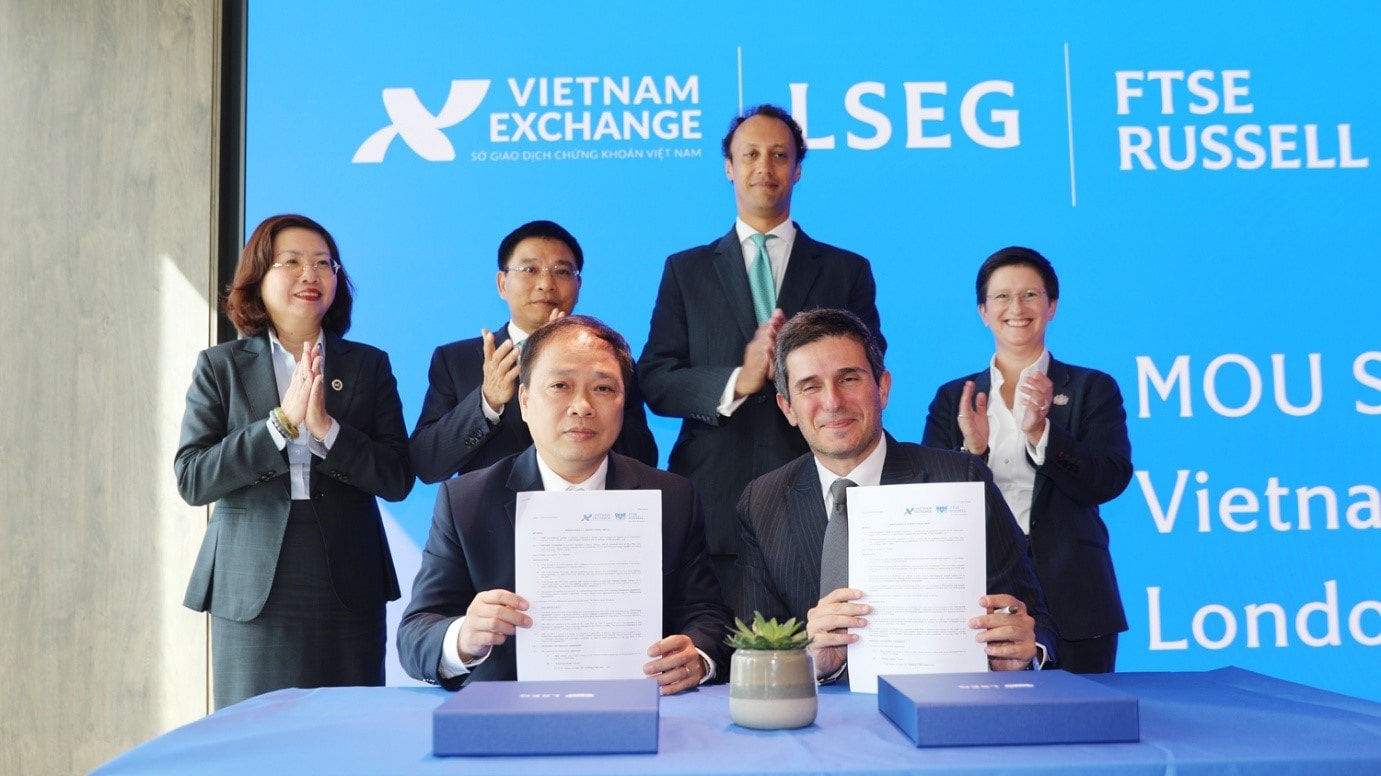No nation has escaped the threat of COVID-19 to lives and livelihoods, with many countries seeing cases resurge recently. Amid this crisis, Việt Nam has an opportunity to consider its longer-term economic aspirations, with relatively few cases and fatalities to date.
McKinsey & Company has released a report saying that the right structural adjustments could help Việt Nam get back on track on the journey to become a high-performing economy. Matthieu Francois, Associate Partner, McKinsey & Company speaks to Việt Nam News reporter Vũ Hoa about this issue.

Amid the complicated developments of COVID-19, what is your assessment of the economic situation of Việt Nam? What sectors and fields have contributed to the country’s economic growth in 2020?
There are three key sectors that have contributed to Việt Nam’s economic growth in 2020. Firstly, domestic consumption has been and is expected to continue to be critical to holding the economy together. When we surveyed 600 Vietnamese consumers back in April, they indicated that spending cutbacks are mostly being felt in the discretionary spending category, which makes up 26 per cent of GDP. While the spending on essential goods and services, which accounts for 42 per cent of GDP, is relatively well insulated.
Manufacturing has also been a crucial sector for Việt Nam’s growth. Even during the first COVID-19 lockdown when most manufacturing activities slowed down, electronics and pharmaceuticals production remained stable.
In addition, relatively stable investment flow into Việt Nam – which includes foreign investment, domestic private investment, and public investment – also plays an important part in maintaining GDP growth, as they represent 26 per cent of the economy. Despite an overall year-on-year decline, foreign direct investment (FDI) growth rates in the first six months of 2020 were sustained by continued interest in Việt Nam’s industrial zones and the approval of major projects.
The world economy is set to continue the downward trend for the upcoming years. What do you think Việt Nam needs to do to maintain the growth rate and quality in the coming years? What are the key priorities?
Our latest article identified four key priorities for Việt Nam to reimagine its longer-term growth. It should strengthen its position as a preeminent international destination, for manufacturing activities and also tourism. The country has long been an attractive offshoring destination: its share of labour-intensive manufacturing exports from emerging markets grew 2.2 per cent between 2014 and 2017. Its offshoring subsector could grow if companies make greater efforts to diversify their supply chains in the wake of the pandemic.
Beyond next year, while international tourist arrivals globally are projected to plunge by 60 to 80 per cent in 2020 and tourism spending is not likely to return to pre-crisis levels until 2024, tourism is still a key lever that will activate Việt Nam’s recovery in the long term. Reopening tourism-related businesses and managing their recovery in a way that is safe, attractive for tourists, and economically viable will require co-ordination at a level not seen before. As national borders consider reopening, a partnership between governments and the tourism industry will be essential to diversifying both tourism products and market segments.
Việt Nam should also boost investment in education and infrastructure to increase productivity. Investment in education could raise skill levels in the workforce as part of initiatives to increase productivity, which lags behind that of Việt Nam’s regional peers and has plateaued, despite positive economic growth and ongoing competitiveness in labour costs. A higher-skilled workforce could attract manufacturers exploring Industry 4.0 technologies and help to move the country up the value chain into more productive and higher-earning areas.
As for infrastructure, investments to redevelop it could be scaled up. In times of economic crisis, we often see governments borrowing money to invest in large infrastructure efforts in a Keynesian fashion. In Việt Nam, its significant share of public debt might limit the Government’s ability to spend a large amount of money. Thus more creative solutions, such as stronger execution of public-private partnerships, would be required.
The country should increase national resilience with a focus on State-owned enterprises (SOEs), small-and-medium enterprises (SMEs) and the informal sector. SMEs and the informal sector collectively form a crucial domestic demand engine and will continue to need support, especially in the short term while growth and incomes remain depressed. SOEs account for one-third of GDP yet grow much more slowly than other companies do. While Việt Nam has reduced its number of fully owned SOEs by more than 90 per cent since 2001, its journey is far from complete because these efforts have yet to make the sector any leaner. Targeted equitisations, sustainable divestments, and transformation programmes could be considered to make SOEs competitive at home and even more competitive on the global stage.
Lastly, exploring renewable energy for less carbon-intensive growth should be a priority. The new national plan already signals a significant effort to energise the transition toward a less carbon-intensive future. To understand exactly what it will take to integrate renewables, Việt Nam could also look at opportunities to encourage significant new capital investment in them through strong incentives and conduct a detailed grid-capability assessment for a new generation of assets.
It is expected that there will be a shifting of foreign investment flows to Việt Nam. What should the country do to position Việt Nam as a preeminent international destination to attract FDI?
Even before COVID-19, Việt Nam was already an attractive investment destination for a growing number of industries and countries who are making efforts to diversify their supply chain.
McKinsey Global Institute’s latest research on rebalancing supply chain found that over the last five years, US$1.4 trillion of trade has moved from one country to another across 23 major industry value chains. Of this shift, Việt Nam has been gaining significant trade share, especially in the furniture, textile and apparel industries.
Việt Nam is also amongst the top three gainers in high-tech sectors like electrical equipment, computer and electronics, and communication equipment. Computer and electronics is the leading sector that makes up 36 per cent of Việt Nam’s exports in 2017. Similarly, high-profile investors in electronics have announced recently that they will move production of their cell phone components to Việt Nam.
In the short term, to maintain this momentum the country could focus on the basics: keeping an attractive and stable investment environment, and ensuring sustainable support on the delivery of these projects. In the longer term, as Việt Nam aspires to move toward higher-value exports, it could enhance reskilling efforts to increase workforce productivity.
Việt Nam hopes to become a high-income nation by 2045. Your report revealed that investment in education could boost productivity for the country. Could you elaborate on this?
Việt Nam performs better in the Programme for International Student Assessment (PISA) rank compared to the rest of its peers in Asia. However, this performance does not yet translate into a highly productive workforce. The imperative for the country now lies in converting high-performing pupils into highly productive workers.
Three productivity enablers are important: putting in place the right infrastructure, attracting investment (both public and private), and advancing technological adoptions. Beyond these enablers, we also see two important shifts that need to happen.
The first shift is what we call “education for employment” – in other words, making sure that the skills needed in the workforce are taught in schools. We observe that despite having an excellent early education system, many workforce-ready talents in the country lack the necessary skills that employers need to grow their businesses and eventually develop the economy. We could start by solving these questions: how do we help higher education system produce enough highly-skilled engineers, technical experts, and managers to feed the economic growth; how do we involve key employers in the country in shaping this path; what could Government do to facilitate a convergence of the supply and demand for skilled workers?
The second shift is accelerating Industry 4.0 adoption within organisations. Industry 4.0 refers to the set of practices and technologies that can rapidly transform the way organisations perform. Việt Nam could start by exploring the use of data at scale, analytics and business intelligence, development of human-machine interactions (for example collaborative robots) and advanced production methods. Educating and reskilling the workforce to prepare for this transition is key. Put together, these elements could massively enhance the productivity of any industry – in ASEAN countries, it can potentially increase productivity by 30-50 per cent in industries such as electronics, chemicals or pharmaceuticals.
What do you think about the attractiveness of Vietnamese start-ups and their role in contributing to the abovementioned target?
Việt Nam could tap the significant unrealised potential of its start-up ecosystem by attracting bigger funding. In 2019, $741 million was invested in Việt Nam’s start-ups, compared with $2.38 billion in Indonesia’s. This can be done by allocating FDI and making financing available for high-potential start-ups.
Leverage the momentum of having a young and urban population that is more connected now than ever (with 130 per cent SIM card penetration rate). In this regard, there is now a start-up ecosystem forming around fintech/digital payments.
In addition, the country should attract highly-skilled tech talents both in-country and overseas. In a post-pandemic world, this could mean freeing up talent movements across borders and leveraging its labour cost competitiveness to encourage offshoring of tech position/jobs by other start-ups into Việt Nam.
It should encourage further ecosystem collaboration by creating incubators. These ecosystem incubator teams can experiment with advanced techniques, such as using data analytics to uncover promising opportunities in real-time, bringing in a range of partners to help shape new offerings, and executing quick-turnaround experiments to create bottom-line impact.
Việt Nam News



